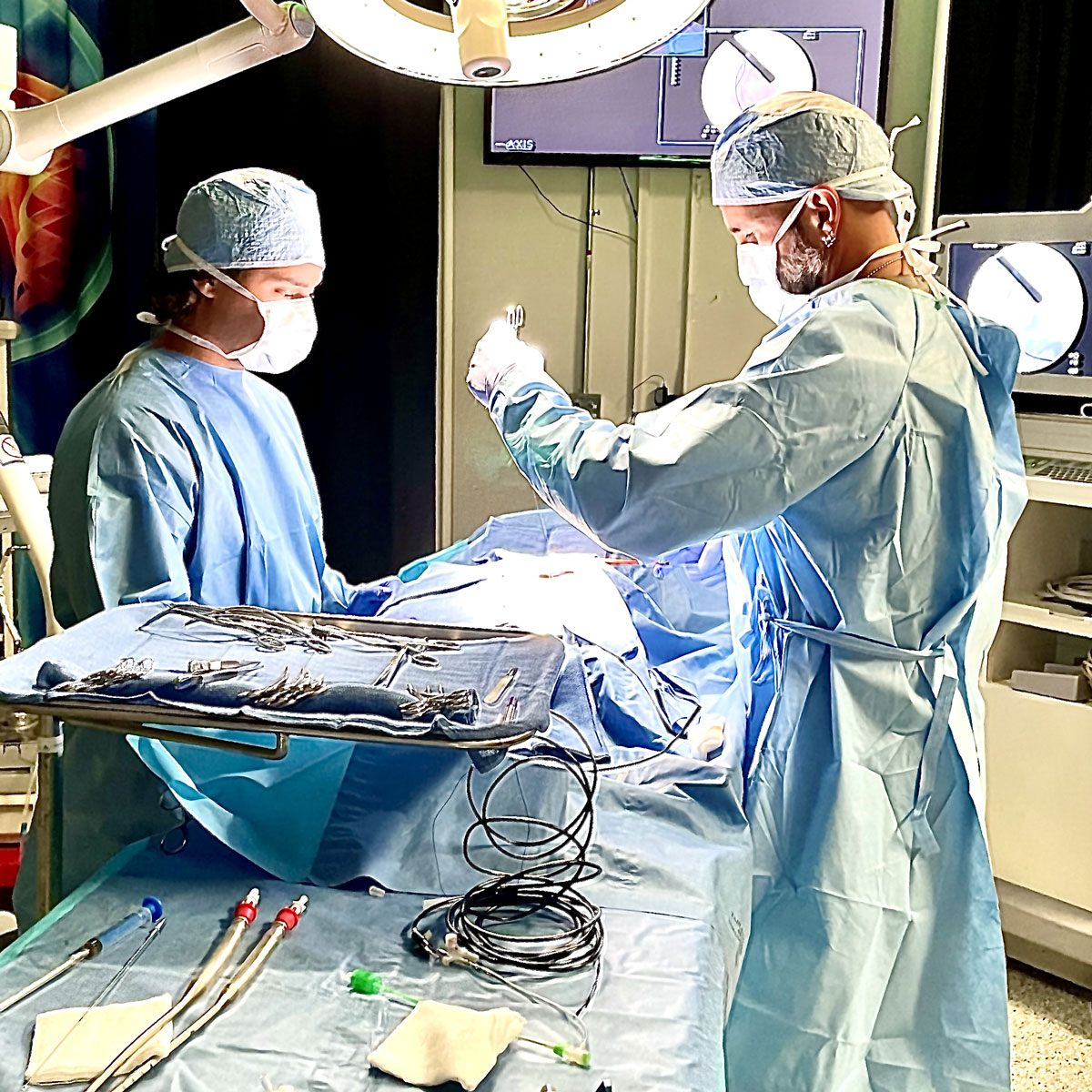Axis offers perfusion and simulation services that result in a high-fidelity hyper-realistic experience for medical training and education, product development, military, and first responder training. We offer next-level device development and medical/surgical education events. From fully reconstituted vascular and organ volumes to tissues that “bleed” when cut.
Device Design, Development & Evaluation
Fluid Perfusion
Medical devices intended for endovascular and hollow organ structures require blood flow for implantation and use. We work closely with our clients to plan the best method of cannulation and thereby flow for your perfused cadaver needs. Single system (venous or arterial) or simultaneous systems are available and routinely used. Our perfusion services regularly use clear perfusate to enable flexible endoscopic evaluation of vessels, hollow organs, and the devices intended for the treatment of pathology within these structures. Once perfused, percutaneous or open vascular access can be obtained by our specialist or reserved for your team. The heated perfusate is also available for devices that require it.
Vascular Ventilation
Vascular ventilation is a method of perfusion intended for external and internal 3D vascular and hollow organ structural investigations. This method aligns well with studies related to vessel size and overall anatomic relations. Structures can be viewed from an open, or endoscopic approach depending on your needs.
Diagnostic Imaging Capabilities
C-arms for fluoroscopic guidance of guidewire, sheath, and device approaches are available upon request. Rental units with higher functions may be available. Please contact us in advance to discuss your imaging needs.
Axis Research & Technologies understands the need for a technologically advanced state of the art audio visual system to allow our clients limitless possibilities. Each Axis location offers robust audio visual capabilities opening the door to new possibilities for our clients, allowing any client from around the world to experience their device within the intended area of focus. This can include but is not limited to, a recording of our four-way split screen that can display an array of views including a room shot, hand shot, c-arm, ultrasound, and a borescope to create a truly unique and immersive experience. Not only does this provide a recording from the surgeon's perspective, but these capabilities also provide useful educational content when it comes time to develop your IFU.
Available for Bookings
Request a Callback
"*" indicates required fields

Simulation-Based Device Evaluation
We see this as the next phase of testing. A true assessment of usability by the proceduralist with insightful information for the engineers. We will work closely with you to design scenarios to test your device creating an atmosphere that is as close as possible to resemble a live patient operating room. The cadaver patient will be prepped and draped for the procedure including being mechanically ventilated with vital signs displayed on the bedside monitor. The team is expected to gain access to and deploy the device based on the educational material provided to them. Will your device cause ectopy, arrhythmias, or blood pressure fluctuations? What is the unexpected complication? How does the team react to this? We can test it!
Medical, Surgical, and Device Evaluation in a Simulated Trauma Environment
One of our medical educational goals is to provide full medical teams access to cadaver-based simulated trauma scenarios. Your team will resuscitate the patient per protocol, with assessment happening through standardized rubrics during these training events. The “resuscitation” in this environment is unlike any ACLS/ATOM or ASSET course. Anesthesia must establish an airway and obtain vascular access through central line placement. Surgical nurses must obtain peripheral or intraosseous access and begin volume resuscitation. Surgical technicians or nurses must ready the instruments and technologies for the procedure. Then finally, surgeons must identify, approach, then obtain proximal or direct control before attempting repair of the injury. The vital signs progress based on the team’s performance. Following each 30-minute scenario, the team is debriefed. The debriefing includes key performance video highlights as well as a means of substantive feedback on cognitive and psychomotor skills used by the team. The performance rubric designed specifically for each scenario serves as the final tally for the team which includes time metrics for key objectives. Let us help you to develop competency-based medical training for your learners.








